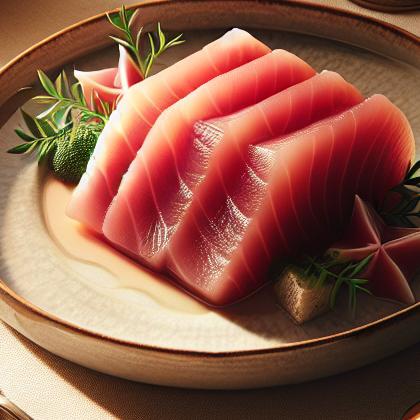Showing results for 'Hamachi tuna'
close
Hamachi Tuna

The Japanese amberjack or yellowtail, Seriola quinqueradiata, is a bony fish in the family Carangidae. It is native to the northwest Pacific Ocean, from Japan to Hawaii.
Hamachi tuna Properties:
| Food Property | Type | Description |
|---|---|---|
| Flavor Profile | Umami | Hamachi tuna has a rich and savory umami flavor that is often described as buttery or creamy. |
| Texture | Firmness | Hamachi tuna has a firm and slightly chewy texture that holds together well when sliced. |
| Moisture | Hamachi tuna has a high moisture content, giving it a succulent and juicy texture. | |
| Nutritional Value | Macronutrients | Hamachi tuna is a good source of protein and healthy fats, making it a nutritious choice for a balanced diet. |
| Micronutrients | Hamachi tuna is rich in vitamins and minerals, such as vitamin D and selenium, which are important for overall health. | |
| Color | Natural Pigments | Hamachi tuna has a vibrant pinkish hue, which comes from natural pigments found in its flesh. |
| Aroma | Volatile Compounds | Hamachi tuna has a mild and clean aroma with hints of the ocean, making it a popular choice for sushi and sashimi dishes. |
| Chemical Composition | Acidity/Alkalinity (pH) | Hamachi tuna has a neutral pH level, which helps to preserve its freshness and flavor. |
| Cooking Behavior | Heat Conductivity | Hamachi tuna cooks quickly and evenly due to its high heat conductivity, making it ideal for grilling or searing. |
| Water Retention | Hamachi tuna retains moisture well during cooking, resulting in a juicy and tender final dish. |
Food Pairing App - Version 1.2.0
